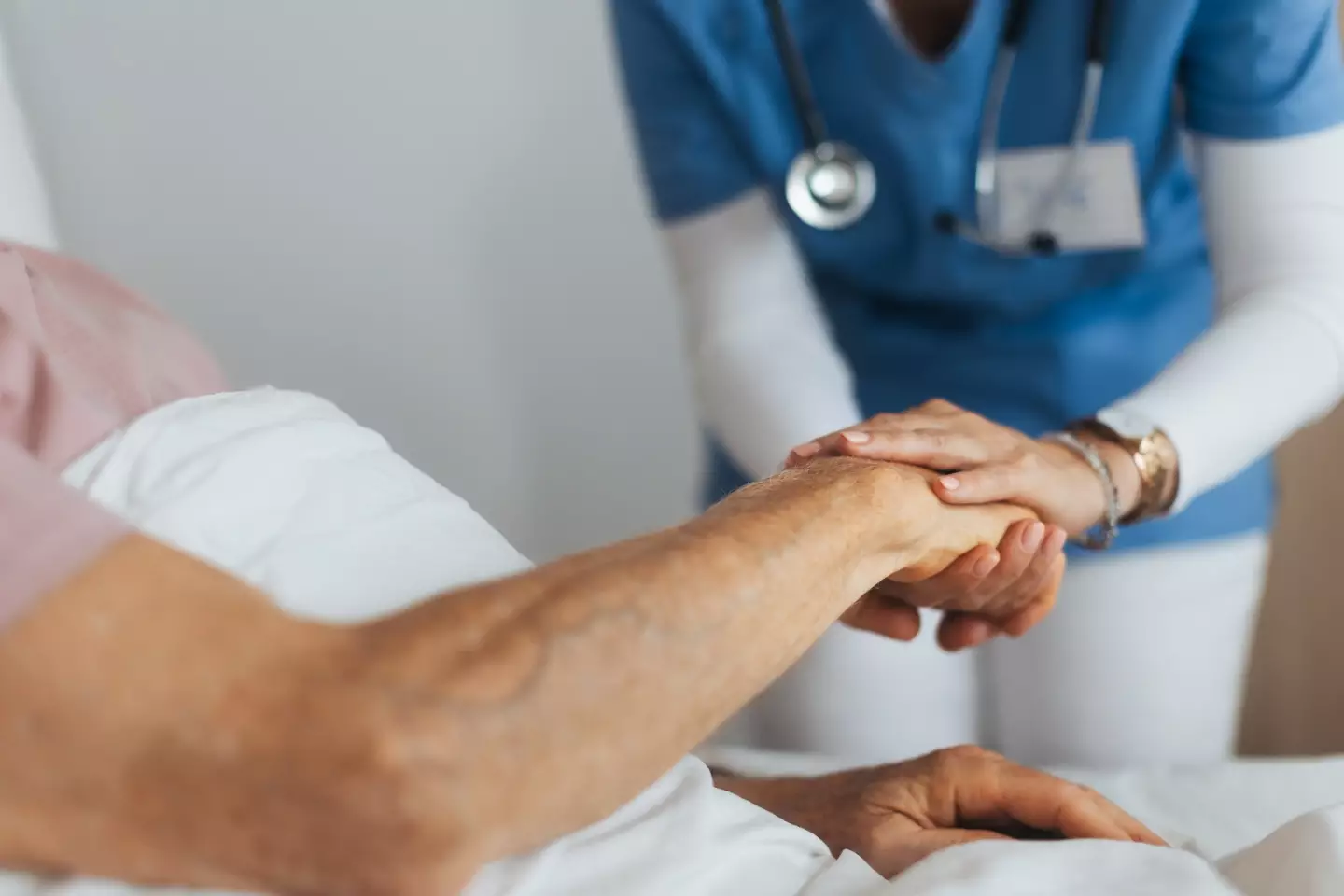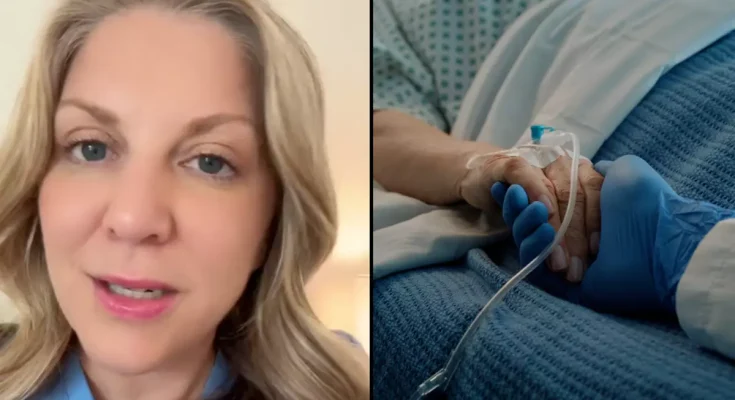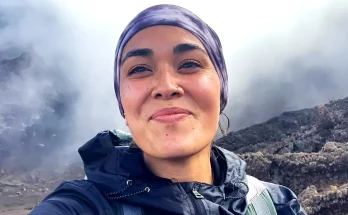A hospice nurse has outlined what ‘death actually looks like’ in four stages so people don’t ‘freak out’ when losing a loved one.
Taking to TikTok, palliative care nurse Julie McFadden has walked her followers through the four stages of death, hoping to help people prepare for the loss of their loved ones as she believes that ‘education decreases fear’.
The 41-year-old, who is based in Los Angeles, has recently answered one of the most common questions she gets as someone in her line of work: what does dying actually look like?
McFadden has explained that dying is a process and consists of four phases spanning across six months.
 (TikTok/Hospicenursejulie)Slowing down
(TikTok/Hospicenursejulie)Slowing down
In the first phase of dying, which she describes as ‘slowing down,’ the symptoms one experiences are more generalised.
“For instance, you’re just going to be generally tired, generally lethargic, not eating and drinking as much, probably being less social,” she said.
A decline in strength
The second phase starts around three months before someone passes and includes more visible signs of debilitation and a decline in strength.
“The closer you get to death – let’s say three months out – you’re going to be more debilitated,” she explained.
“It’s going to be difficult for you to leave the house, you probably are eating and drinking very little throughout the day, and you are sleeping more than you are awake.”
The transitioning phase
The third phase is known as ‘transitioning’ and that’s when people can experience hallucinations, and it happens about a month before death.
“This is when people will start seeing dead relatives, dead loved ones, dead pets, things like that,” McFadden said.
She explained that someone ‘can be up and having a normal conversation with their family’, whilst ‘saying they’re seeing their dead father in the corner who is smiling and telling them he’s coming to get them soon and not to worry’.
 Those who work in palliative care have seen a common pattern among those who are dying. (Getty Stock Photo)Actively dying
Those who work in palliative care have seen a common pattern among those who are dying. (Getty Stock Photo)Actively dying
The fourth phase is the more distinct, scariest time in the dying process.
“The actively dying phase is what scares people, because they’re not used to seeing it and they don’t know what the heck’s going on,” McFadden said.
“Your loved one will likely be fully unconscious, no food or water, possibly for days. They’ll be incontinent, so you will have to change them.”
She warned that someone dying ‘will have changes in breathing, so their breathing is going to look different’.
‘Metabolic changes’ such as a difference in skin colour, high and low temperature, and the ‘death rattle’ can also occur.
She explained of the latter: “It’s literally just a bit of saliva collecting at the back of their throat because their mouth is open, their breathing is going over their saliva and causing a gurgle.”
While these can be upsetting, McFadden insists they’re a ‘normal part of death and dying’ which ‘is not hurting your loved one’.
“It’s important to be educated about what death actually looks like,” she concluded. “Movies and television don’t do it justice, then people see it in real life when it’s their loved ones and they freak out.”
Featured Image Credit: Tiktok/Hospicenursejulie/Getty Stock Images
Topics: Health, Science



